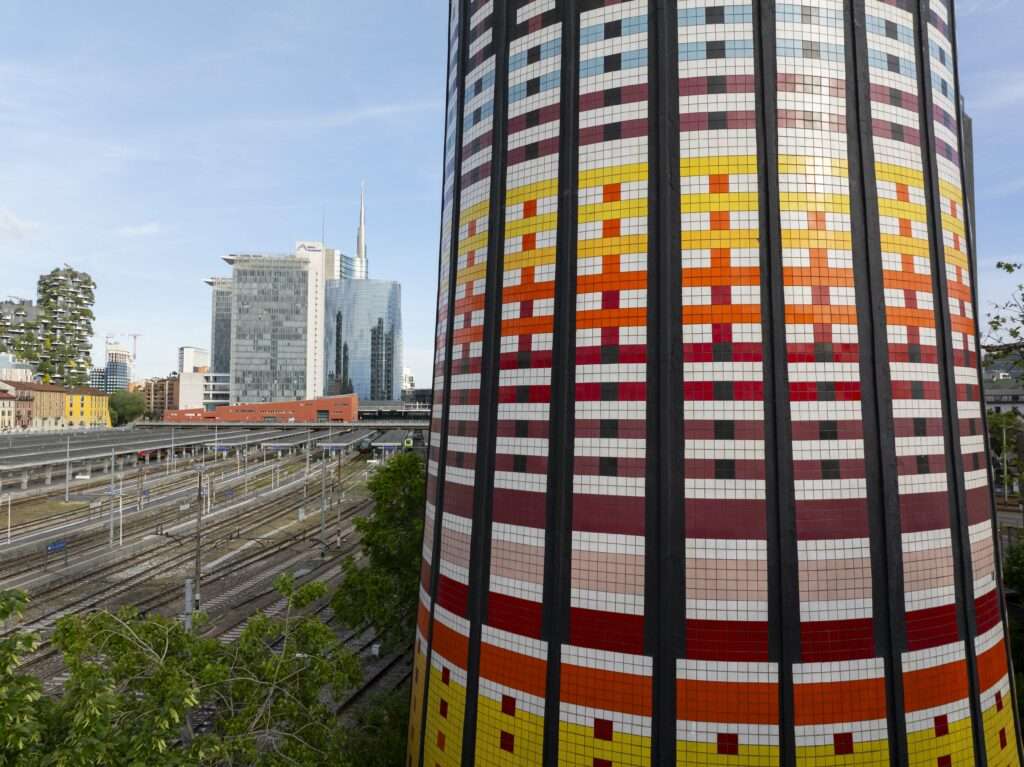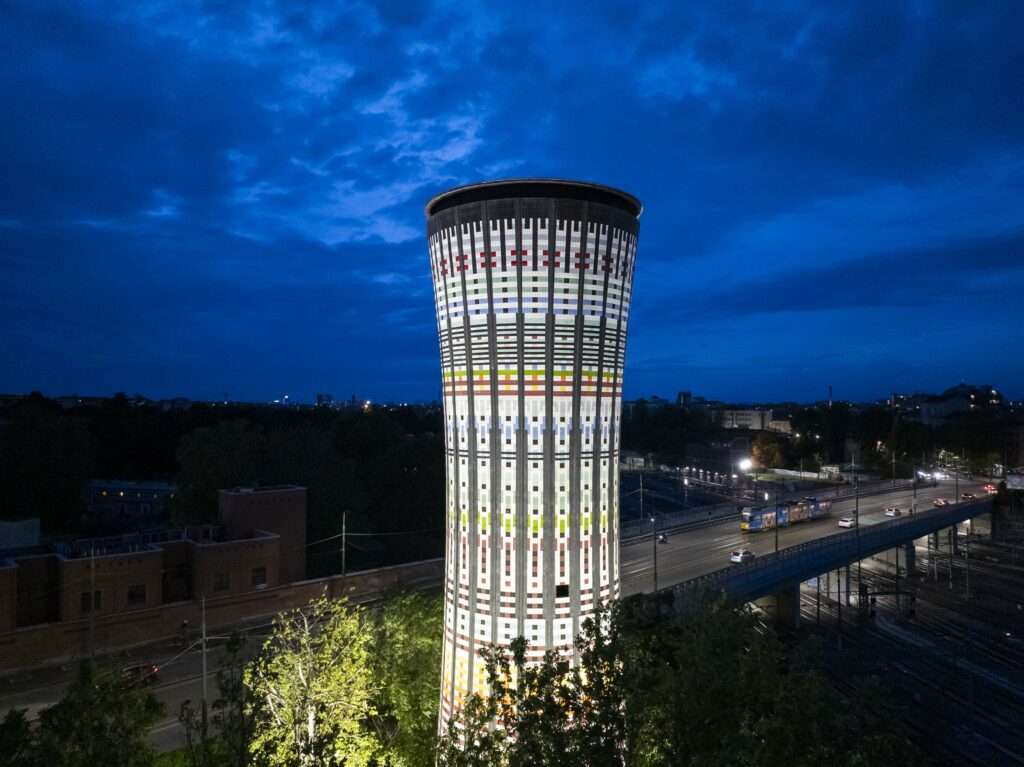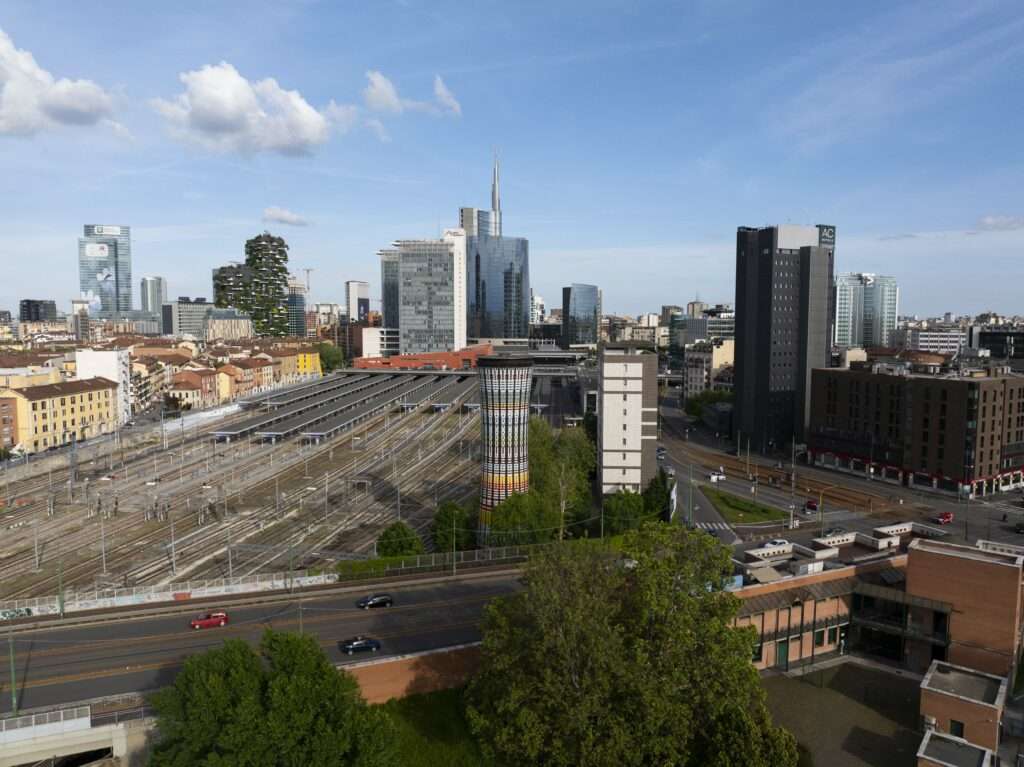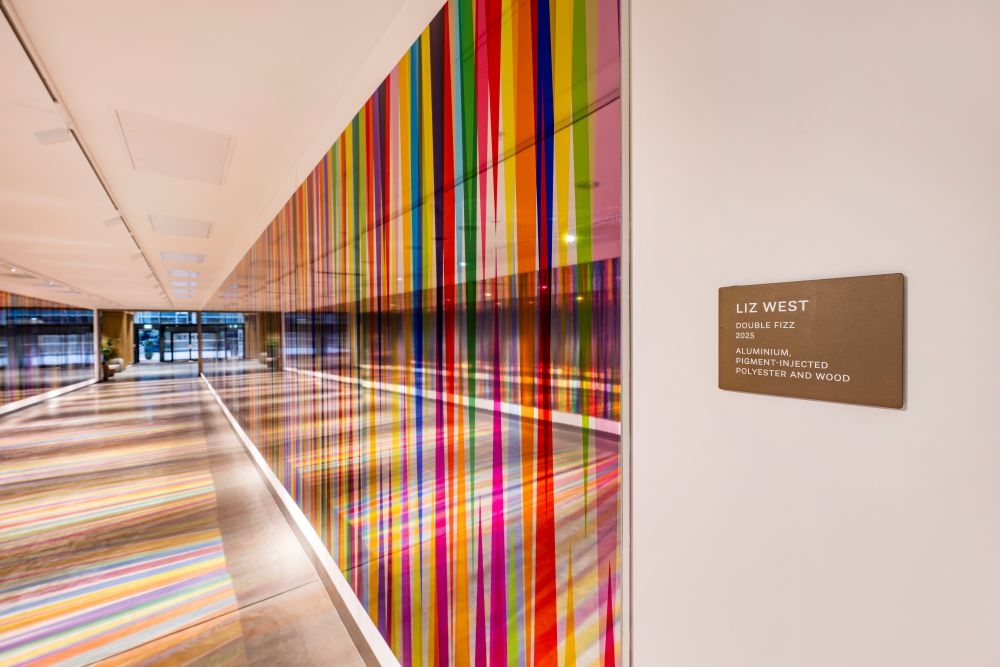The Torre Arcobaleno in Milan’s Garibaldi area has received a new night lighting system. The project, curated in partnership with a group of Italian companies, repurposes the structure as a tribute to the city and its people. This enhancement further qualifies the Torre Arcobaleno as one of the symbols of modern Milan, celebrated for its location, history, and design. It boasts the largest “vertical ceramic mosaic,” spanning 1,000 square meters.
The new system employs powerful LED floodlights, endowing the 35-meter Torre Arcobaleno with a special charm and a fairy-tale effect. It highlights the many shades of colors that have made the tower both recognizable and beloved by Milanese residents, as well as a cult object for creatives and design enthusiasts worldwide.

The 397W LED floodlights provide precise illumination of the tower’s silhouette, enhancing color rendering while maintaining the low power consumption of the previous system. These new floodlights have a lifespan of about 100,000 hours.
Leading the project is the architecture division of the Original Designers Studio 6R5 Network, helmed by Francesco Roggero, Albino Pozzi, Rita Alfano Roggero, and Kiyoto Ishimoto. They acted as “directors,” involving other distinguished names in Italian design, all dedicated to preserving and enhancing the Torre Arcobaleno’s beauty, even at night.

The project partners include:
- Bazzea Construction Technology (renovation work)
- Condor – Formwork, Scaffolding (metal multidirectional scaffolding)
- Disano Illuminazione (lighting)
- Fila Solutions (surface cleaning)
- Marazzi Group (tiles)
- Mapei (adhesives, renovation, and painting)
The Comune di Milano – Milan City Council and RFI, the leading company of the Infrastructure Cluster of the Italian FS Group – Gruppo Ferrovie dello Stato – have also supported this initiative, continuing the commitment to the tower’s preservation.


Torre Arcobaleno: A Bit of History
The tower, with its load-bearing concrete structure, dates back to 1964 when it served as a water tank in the railway yard of Milan’s Porta Garibaldi station. Settled limestone caused iron oxidation and concrete crumbling, leading to noticeable external leaks.
During the 1990 World Cup in Italy, the tower underwent its first major renovation, transforming it from a utilitarian structure into an urban element with aesthetic-symbolic value. This transformation was achieved through the installation of 100,000 10×10 cm tiles in 14 different colors.
The project aimed to accentuate the tower’s circular, concave design, divided into twenty-two faces interrupted by raised ribs. The rehabilitation included wall consolidation, waterproofing, reconstruction of removed parts, and painting of connecting areas.
The designers from Milan-based Original Designers Studio 6R5 Network envisioned this project to foster a new attitude of care and pride in the city’s urban heritage. The redevelopment also included rehabilitating an old railway bridge between Viale Forlanini and Viale Corsica, later known as the “Passaggio a Nord Est.”
In 2015, during the Expo year, the tower was again restored and modernized by the same group of companies involved today. They covered the full costs, viewing the intervention as a tribute to the Milanese during a period of exceptional visibility for the city.
Meanwhile, the nearby Piazza Gae Aulenti area has become a hub of Milanese design, fashion, and modern architecture. The Torre Arcobaleno stands as a “colored ceramic totem,” reflecting the evolution of Italian master ceramists from artisanal beginnings to global recognition. Today, the Torre Arcobaleno’s new lighting promises to continue to captivate Milanese residents and tourists from around the world.










